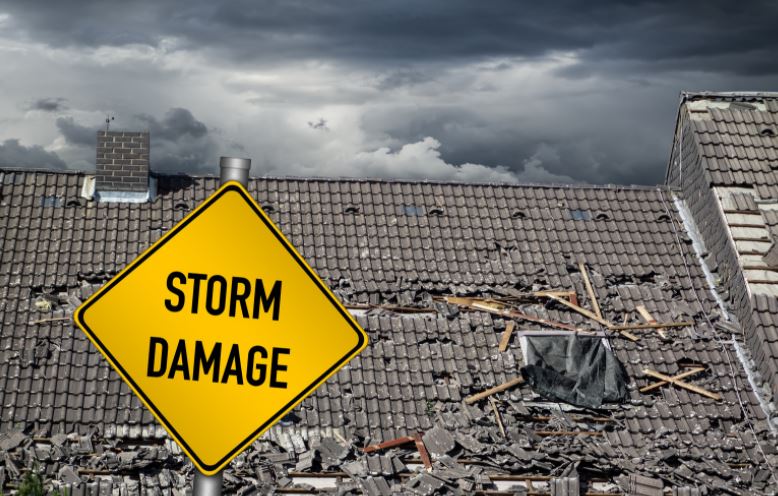The derecho that swept across the Midwest from Iowa and into Indiana caused up to $7.5 billion in damage. While Bloomington, Indiana was fortunate enough to not bear the brunt of the storm, weather caused significant damage regardless even in Monroe county. According to Homeadvisor, the average storm damage costs are in the range of approximately $9,000 per claim. If you happen to meet your deductible, this may be a reasonable amount but paying $9,000 out of pocket due to a storm would be extremely painful and debilitating for many people. Preventing storm damage is incredibly important and ultimately will prevent high repair bills in the future.
Bloomington is known for many things: IU, the arts and its abundance of trees. The majority of damage done to buildings in storms is due to falling trees and limbs, not the wind or rain itself. Trees, unlike houses, are easily blown over in midwestern storm winds. A large oak tree that falls on a house can completely destroy it and make it uninhabitable. However, damage prevention to homes can be accomplished by identifying the potential hazards.
The first and most obvious is: Check for large branches over your home. If the branch is large, old and has a lot of foliage then it probably should be removed. The more leaves and foliage a branch has the easier it catches wind and breaks due to that force. The branches can also break to due accumulating too much ice and snow as well.
Another important detail to look for is whether the tree has significant damage to its roots, trunk or canopy. Lighting damage is common and can quickly render a tree susceptible to even moderate winds or ice. This results in a massive hazard for homes and buildings. Exposed roots, fungal bodies at the base and other, old bark and trunk damage can cause weakened trees that simply break and fall over, in many cases on homes. Uneven canopies are hazards as well. This can cause loading at different intervals along a tree resulting in a twisting fracture that fells the tree. In many cases this can be difficult to identify, especially for people unfamiliar with tree care. In that case it is advised to contact an arborist to consult on the best and safest course of action.
Soil and tree type and tree age also contribute to storm damage susceptibility. Generally, trees in the evergreen family are more susceptible including firs, spruce, pine varieties and hemlocks. These are soft trees that grow tall and thin. White oaks can also be dangerous, especially in moist soil or soil that is constricted or had construction due to their sensitivity to surface irritations. Older trees are simply more susceptible due to their age.
You can inspect trees yourself by identifying some of the hazards including V or U-shaped multiple trunks which make splitting easier, heavy leans by the tree, old wounds, and brown or dead leave/branches in the crown. Trees tend to die from the top down so inspecting the crown of the tree is important. It is always highly advised to call an arborist or tree expert to assess potential issues. We provide free estimates for all work including tree trimming and removal.
Call (812) 345-5694 to get a quote on tree trimming and removal.


Recent Comments